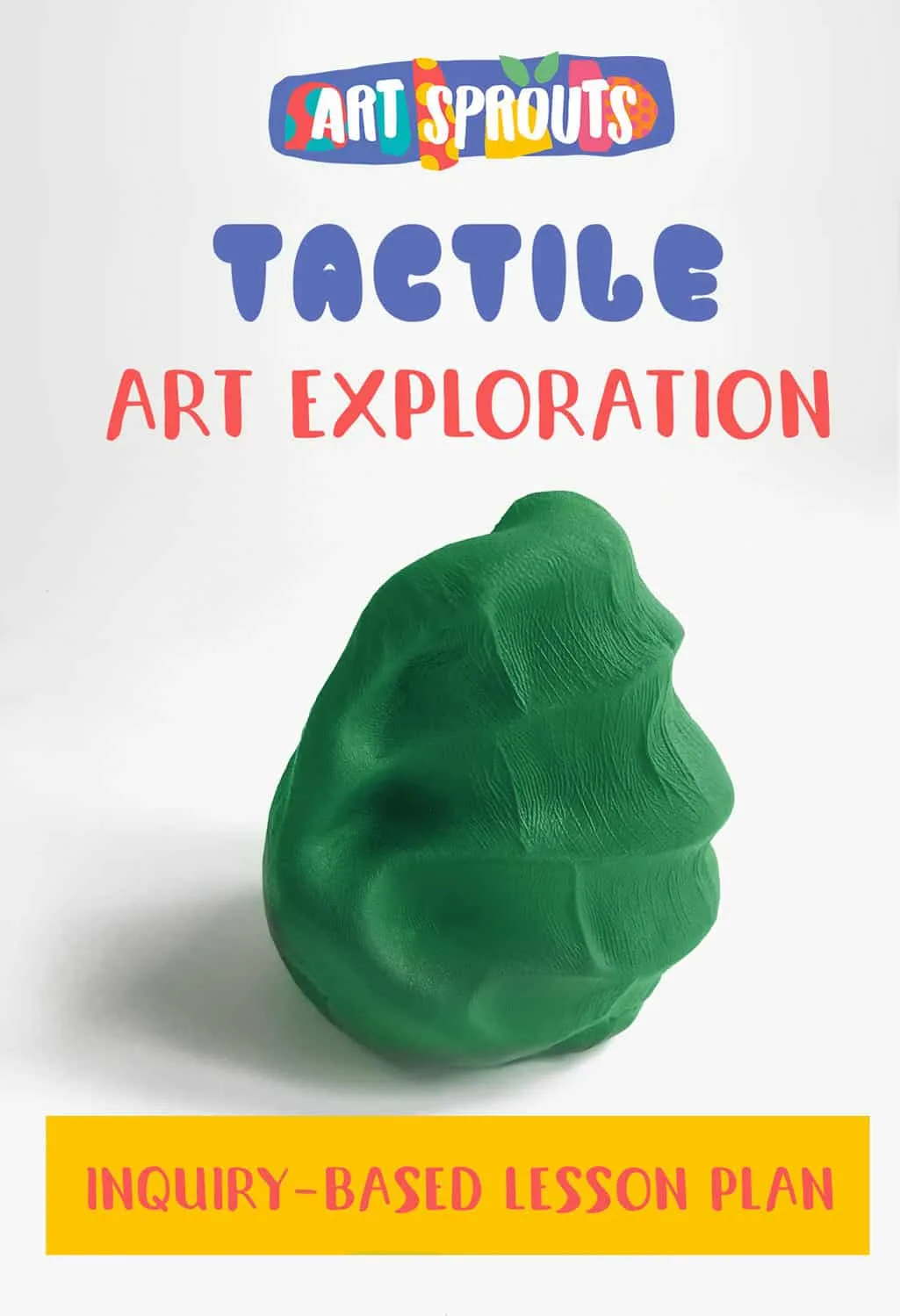Before fidget spinners became a thing, restless students used to torment pens with their fingers. There are some interesting studies that argue that fidgeting actually improves memory and learning tests scores, or at the very least recognizes it as a subconscious attempt to increase arousal in order to improve attention.
Either way, human fidgeted all through history.
Just like with many other involuntary acts, it fascinated Surrealist artists enough to eventually be incorporate it into their art practice.
Play Like a Surrealist: 13 Surrealist Games and Techniques to Unleash Kids Creativity
What is involuntary sculpture?
Involuntary sculpture is basically unconscious manipulation of material.
I also like to call it sensory sculpture for its great focus on tactile sensations.
It can be done with a series of different material and adapted to different settings.
If like me you try to follow a Reggio-Emilia curriculum, sensory sculpting is the ultimate three-dimensional art exploration, bringing together open-ended experimentation with multi-sensory inquiry.
Don’t be fooled by how simple this activity is: within the right context the potential for further developments is huge. I even took a similar class during my master degree in sculpture!
Involuntary Sculpture: Tactile Art Exploration
Material for exploration
Since the focus is on the process rather than the final work I prefer to use readily available materials that require minimal prep and cleaning time: modeling clay, paper, and metal wire are some of my favorites.
Pen and paper for writing (optional)
Material for cleaning up
None! (Assuming you wisely chose the right medium)
Set up the studio
The idea behind involuntary sculpture is to manipulate a small amount of material while being purposely “distracted”.
For once, kids should NOT pay attention to what they are doing!
While it may seem like an innate attitude for students (sic), we all have a tendency to purposefully work toward a specific result, editing our work as we go.
Here are some useful walk-around:
- You could have students sitting comfortably in the dark (or with closed eyes)
- You could have them carefully listen to music or an audiobook
- Or you could have them watch a video while they fidget with their material.
Each set up offers different opportunities for discussion: working in the dark will shift attention to the tactile sensations, they may be inspired by the music to repeat certain movements, or they may achieve complete involuntary manipulation while focused on a video or a story.
Set up the room with comfortable space for the students to explore.
Since this is quite a conceptual class, you may wish students to write down their reflections and findings. If that’s the case, prepare set aside some paper and pens for them.
Art Exploration Process
You may want to start the lesson by talking about “fidgeting” and the reason we do it. Ask the students about their experiences and habits.
Talk about “visual sensations” versus “tactile sensations”. Stretch to them the idea of today’s lesson being a process, an exploration. You don’t expect them to create anything, but rather they should enjoy the process, paying attention to how the material feels in their hand and the actions they can do with it.
Throughout the class, students can experiment with different materials.
How do the materials differ?
What different sensations do they experience?
How is the manipulation process different?
What do they like best?
All these reflections can be written down in a short paper essay. As we don’t expect to keep the sculpture, it may be wise to create photographic material as documentation.
Further exploration:
- Play Like a Surrealist: 13 Surrealist Games and Techniques to Unleash Kids Creativity
- How to Create Calligram Poetry: Surrealism Art Interdisciplinary Lesson Plan
- Decalcomania Painting Art Exploration | Inquiry Based Learning Lesson Plan

